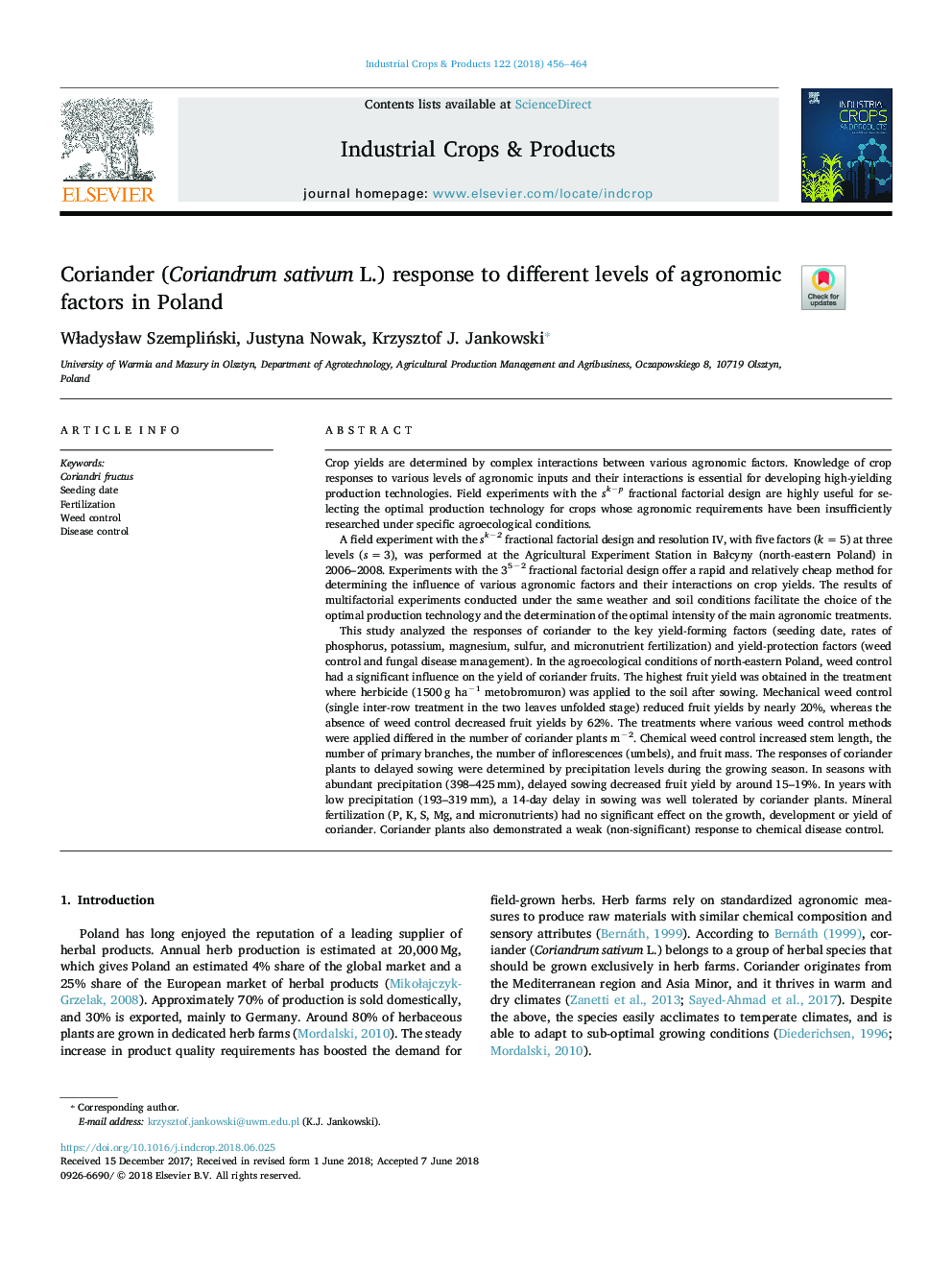| Article ID | Journal | Published Year | Pages | File Type |
|---|---|---|---|---|
| 8879825 | Industrial Crops and Products | 2018 | 9 Pages |
Abstract
This study analyzed the responses of coriander to the key yield-forming factors (seeding date, rates of phosphorus, potassium, magnesium, sulfur, and micronutrient fertilization) and yield-protection factors (weed control and fungal disease management). In the agroecological conditions of north-eastern Poland, weed control had a significant influence on the yield of coriander fruits. The highest fruit yield was obtained in the treatment where herbicide (1500â¯g haâ1 metobromuron) was applied to the soil after sowing. Mechanical weed control (single inter-row treatment in the two leaves unfolded stage) reduced fruit yields by nearly 20%, whereas the absence of weed control decreased fruit yields by 62%. The treatments where various weed control methods were applied differed in the number of coriander plants mâ2. Chemical weed control increased stem length, the number of primary branches, the number of inflorescences (umbels), and fruit mass. The responses of coriander plants to delayed sowing were determined by precipitation levels during the growing season. In seasons with abundant precipitation (398-425â¯mm), delayed sowing decreased fruit yield by around 15-19%. In years with low precipitation (193-319â¯mm), a 14-day delay in sowing was well tolerated by coriander plants. Mineral fertilization (P, K, S, Mg, and micronutrients) had no significant effect on the growth, development or yield of coriander. Coriander plants also demonstrated a weak (non-significant) response to chemical disease control.
Related Topics
Life Sciences
Agricultural and Biological Sciences
Agronomy and Crop Science
Authors
WÅadysÅaw SzempliÅski, Justyna Nowak, Krzysztof J. Jankowski,
